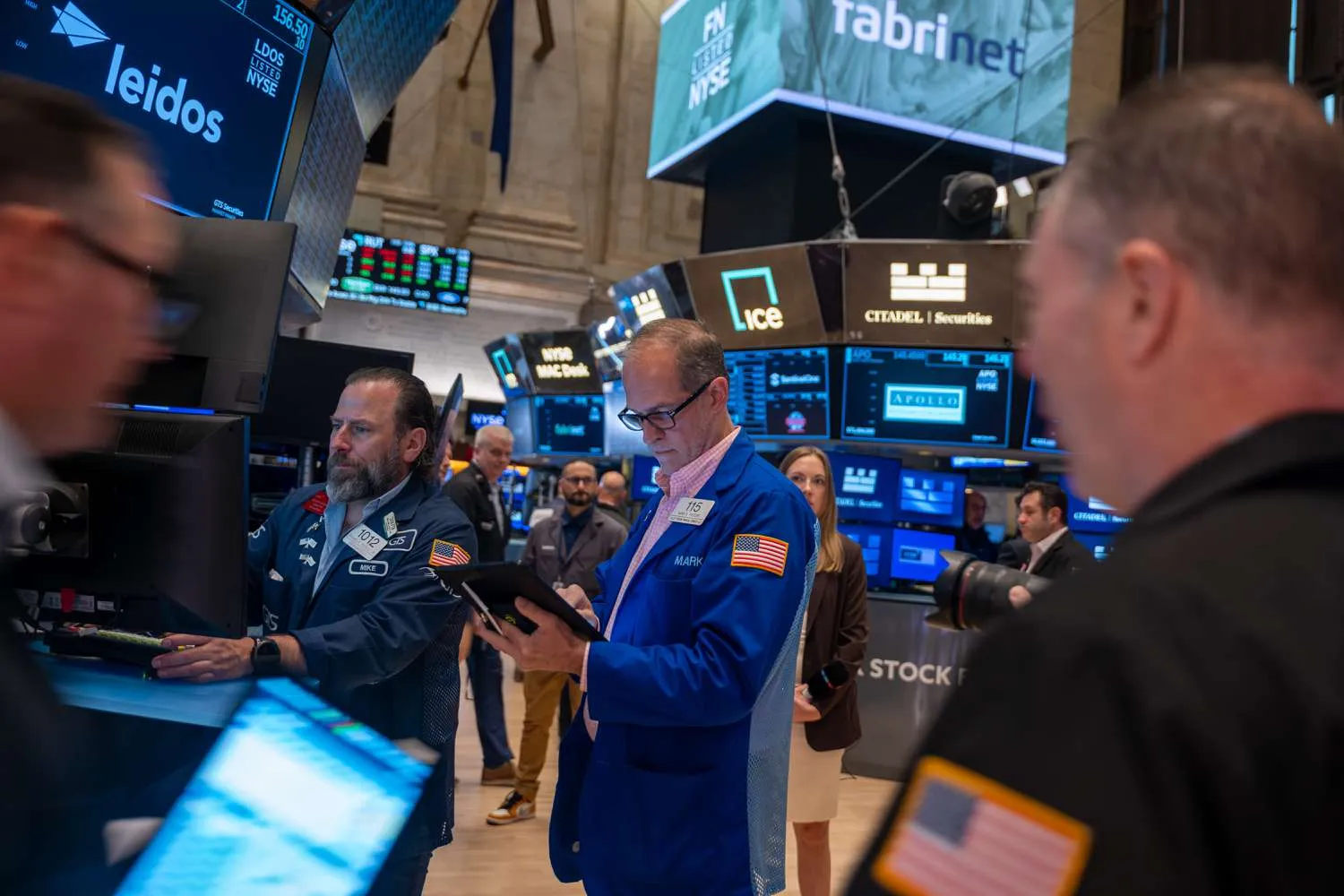The best runners don’t just move faster and more efficiently they also recover quicker between races. In a similar way, the current bull market, which kicked off roughly six months ago, is demonstrating remarkable endurance, taking only brief pauses before regaining its stride and pushing toward new highs.
Recently, the S&P 500 dipped as much as 2.98% on an intraday basis most of that in a single session on Oct. 10, after former President Donald Trump reignited tensions in the U.S.-China trade dispute. Yet, instead of spiraling, the index held steady within that one-day range for nine trading sessions before climbing to a new high last Friday, briefly topping 6,800. The rally gained traction after a mild inflation report removed one obstacle to the two additional Federal Reserve rate cuts widely expected before year-end.
The CPI data essentially acted as a green light, shifting investor attention to the next major catalyst: Big Tech earnings. With AI-fueled names poised to regain leadership, traders are once again leaning on the market’s favorite growth engines.
Last week’s column suggested that a little more turbulence might have been healthy a shakeout to clear speculative excess and reset investor expectations. But it seems the market didn’t need a real scare after all. Aside from a short-lived rotation out of gold, momentum plays, and meme stocks, the pullback was mild and quickly absorbed.
Evercore ISI’s Julian Emanuel noted that gold’s sharp swings and the corresponding volatility in speculative assets don’t necessarily dictate the broader market’s path. He pointed out that back in early 2021, when meme stocks, SPACs, and unprofitable tech names peaked, the market still pushed higher the S&P 500 gained another 23% over the following year. His takeaway: rumors that speculative trading is dead in 2025 are “greatly exaggerated.”
While speculation remains lively, the froth seen during the height of the 2021 mania has not reappeared to the same degree. In fact, retail traders continue to show incredible persistence. Citadel Securities’ Scott Rubner highlighted that retail investors now account for about 22% of total trading volume the highest since February 2021 and have been net buyers in 23 of the past 27 weeks.
And why would small investors pull back? AI enthusiasm continues to ripple across industries, while platforms like Robinhood blur the lines between investing and gaming, introducing products like sports prediction contracts. Meanwhile, niche sectors from lithium to quantum computing are seeing speculative bursts fueled by rumors of potential government involvement, in what could be dubbed “too rigged to fail” behavior.
Yet beneath the hype, real profits are still materializing. Corporate earnings have been robust, with roughly 80% of companies beating expectations a rate above average. While not all stocks are being rewarded, earnings growth remains the driving force supporting elevated valuations.
Still, there’s a disconnect. S&P 500 earnings projections for 2025 have fallen slightly from $274 at the start of the year to around $268 now even as the index has climbed 15.5%. That means stocks are getting pricier, but optimism persists. Analysts are already looking to 2026, where forecasts above $304 per share form the basis for bullish valuation assumptions. This forward-looking confidence is a hallmark of long-running bull markets.
Goldman Sachs’ John Flood believes recent market turbulence might have set the stage for the next move higher. He argues that the recent momentum drawdown has cleared excessive optimism, leaving investors better positioned for positive surprises from Big Tech. “If there are no major misses from Microsoft, Amazon, Google, Meta, or Apple,” he wrote, “we could see another leg up led by mega-cap tech.”
As the year heads into its final stretch, the seasonal bias is once again in the bulls’ favor. Historically, markets tend to rise in November and December, especially after a strong first ten months. While seasonal patterns haven’t been perfect this year the market stumbled in early April instead of rallying the setup still leans bullish. Renaissance Macro Research notes that last week marked one of the strongest historical entry points for three-month gains.
A few weeks ago, Trump’s renewed talk of higher China tariffs briefly rattled investors who had grown complacent about trade risks. Combined with a few credit hiccups and overbought speculative sectors, that momentary risk-off tone faded quickly as markets found footing again.
Still, complacency may be reemerging around the economy itself. Many investors remain confident in its resilience, pointing to strong spending by wealthier consumers and steady business investment. Official data may look uneven, but corporate commentary hasn’t flashed warning signs.
That said, recent market signals hint at moderation. Consumer discretionary stocks have cooled, and cyclicals have lost relative momentum. Strategist Jim Paulsen notes that cyclical sectors have lagged notably since early October, while 3Fourteen Research’s Warren Pies observes that housing and other growth-sensitive industries have weakened even as AI stocks surge a divergence suggesting mild growth concerns.
Some soft data including rising layoff headlines and sluggish mortgage activity support that narrative. Yet the market may be cushioned by several factors: continued AI enthusiasm, the Fed’s dovish tone, and expectations of stimulus from next year’s tax refunds.
This steady, low-volatility climb since April bears resemblance to 2017’s relentless rally, which eventually overheated into a sharp correction in early 2018. For now, though, there’s no clear reason to doubt the bulls’ control. Still, history suggests it’s worth keeping an eye on when not if the next test arrives.

Subscribe to our newsletter!
As a leading independent research provider, TradeAlgo keeps you connected from anywhere.








